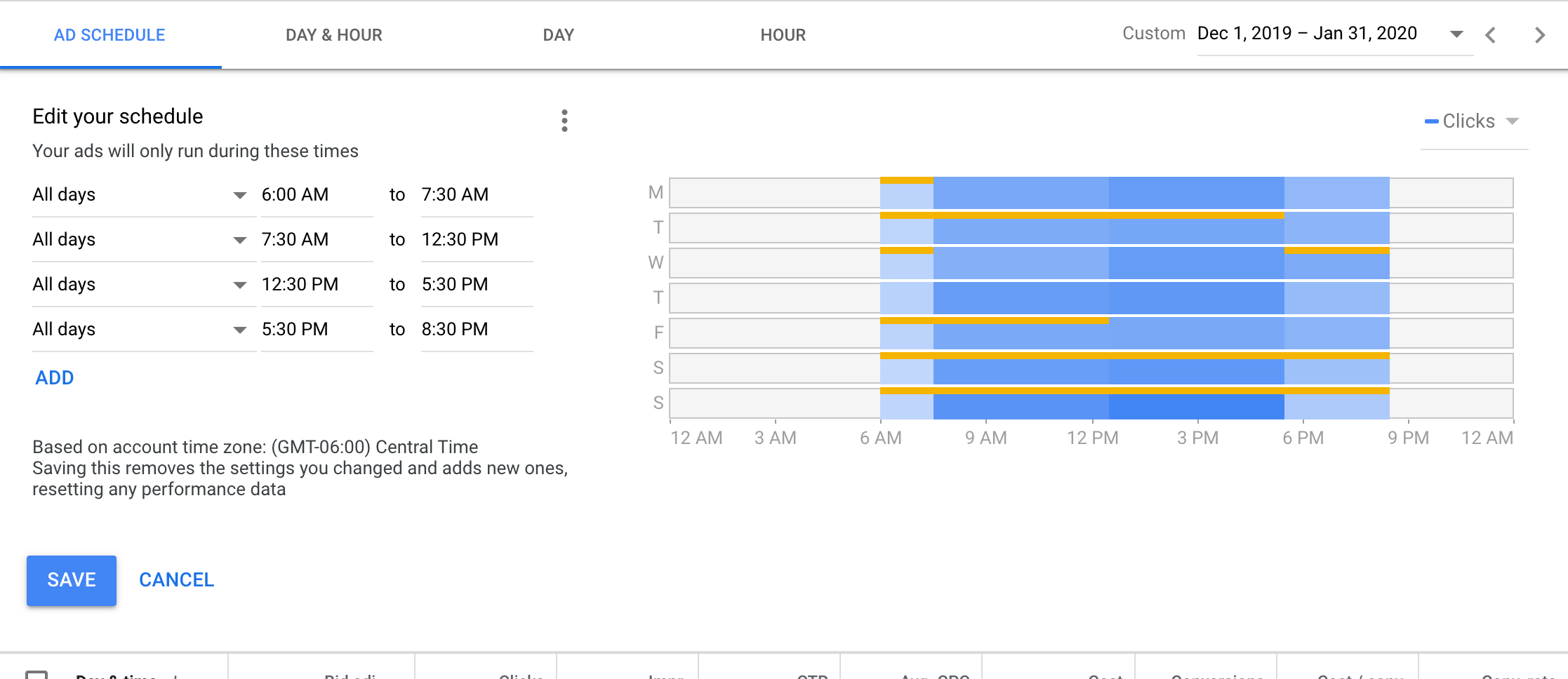Due to circumstances caused by the pandemic, many businesses have had to slim down their digital marketing spend. Overall, it can be difficult to figure out where to start cutting back.
Recently, we had to split a client’s Google Ads budget in half and obtain similar results. Here are some of the questions we asked ourselves and the solutions we used to succeed. Follow along to see how you can reduce overall spend in your account as well.
1. What Campaigns Are Necessary for Your Account?
We first analyzed what ad campaigns were running in the client’s account. For instance, we looked at their shopping campaigns, and figured out the following metrics:
- Revenue
- AOV (Average Order Value)
- ROAS (Return On Ad Spend)
If there was no revenue and/or a negative AOV and ROAS for the campaign, we switched it off. The same practice can be done with search campaigns, but by using conversions and conversion rates as the base metrics.
It is important to keep in mind which campaigns are truly valuable. For example, if your search campaigns are organized by services offered, which of these are open? Which are the most profitable? Knowing these details will help you decide what to keep and what should go.
2. Are there Negative Keywords in Your Account?
Another thing we checked was the client’s negative keywords. We already had an extensive list for this client, and made sure to look through search terms again for negative keywords.
If you do not have a list of negative keywords for your account, making one and keeping up with it once a week is a great way to save money. It helps your ads not show for unrelated searches, which prevents irrelevant clicks.
You can visit our negative keyword blog if you need more info on this practice.
3. Are Your Ads on a Schedule?
We then set up a strict ad schedule for our client’s account. This can be helpful for any ad account. For instance, if you know your ads do not convert from midnight to six a.m., you can schedule them outside of that time to ensure that you do not waste money. You can see an example below:

Because of the number of phone call conversions our client received, we scheduled search ads to appear when their physical location is open. This helped prevent wasted spend on unanswered phone calls.
If you’re wondering how to do an ad schedule analysis, take a look at our walkthrough for more info.
3. How Are Device Bids Performing?
We then adjusted device bids for our client. Ever since Google introduced device type bidding, this has been a useful bid strategy to help increase conversions and, of course, prevent loss of budget.
Here are which devices are included and tips:
- Mobile Phones – Websites with a “click to call” button tend to perform very well on this device.
- Computers – Certain verticals that require more intense research, such as housing or healthcare, do well for this type.
- Tablets – These devices tend to perform poorly across the board.
While these trends may be normal for most accounts, make sure that you do your own analysis to make sure yours isn’t an exception. By reducing bids on devices that perform poorly, you can save budget.
4. Do I Need a Shared Budget?
For accounts that still have many campaigns and a small budget, such as our client, one way to keep expenses down is to put shared budgets in place. This when campaigns pull from one budget instead of having one each.
If you decide to do this for your account, make sure that you make the average daily budget slightly under your calculations. This keeps your campaigns from overspending, as Google can allow your campaigns to go over budget at times.
To set this up, you can get assistance by reading this article from Google’s Help Center.
5. Successful Budgeting
Thanks to the above solutions that were put into place and close monitoring, our client reached a 7x ROAS on half of their regular budget. This helped their business benefit during this difficult time.
If the client’s spend should change again, we will look into adjusting things more. The above changes have the ability to be permanent for our client if desired. However, reactivating certain campaigns and individual budgets will be useful later when they have the budget and a better market for specific items and services.
It is always beneficial to reevaluate your marketing strategy and major changes at least once per quarter. This is especially true when circumstances in your vertical change, or for seasonality.
Does your digital advertising need help adjusting in response to our changing world? Contact us now to find out how we can help.
